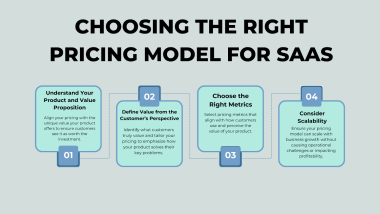Launching a Software-as-a-Service (SaaS) product as a solo developer doesn’t require massive funding or a large team—just strategic planning and focused execution. With the right approach to building a minimum viable product (MVP), using cost-effective tools, validating with real users, and implementing smart marketing tactics, indie developers can successfully bring their SaaS visions to life while maintaining tight budget constraints.
Key Takeaways:
- Validate before coding to ensure you’re solving a real problem people will pay for
- Build a laser-focused MVP with only must-have features that deliver core value
- Use existing affordable tools and third-party services instead of building everything from scratch
- Create continuous feedback loops with early users to improve your product
- Implement low-cost marketing tactics through content, SEO, and community engagement
Finding Your SaaS Sweet Spot
The foundation of a successful bootstrap SaaS business starts with identifying a specific problem that hasn’t been adequately solved. I recommend focusing on niche markets where competition is limited but genuine demand exists.
Before writing a single line of code, validate your concept thoroughly. Create surveys, landing pages that describe your solution, or simple prototypes to gather feedback from potential users.
This validation process saves tremendous resources by confirming you’re building something people actually need. During my research, numerous successful indie hackers mentioned that their biggest regrets involved building features nobody wanted.
Crafting a Lean, Effective MVP
Your MVP should solve the core problem with the absolute minimum feature set needed. Ruthless prioritization is essential when working with limited resources as a solo developer.
I suggest creating a comprehensive list of potential features and categorizing them as follows:
- Must-Have: Features critical to solving the main problem
- Nice-to-Have: Features that add value but aren’t essential
- Future Consideration: Features that can wait until after initial traction
Choosing familiar technologies speeds development and reduces costs. Many successful solo SaaS founders use tech stacks they already know well rather than learning new frameworks just for their projects.
According to one study referenced by RocketDevs, solo developers who stuck with familiar tech stacks were 60% more likely to launch on time compared to those who attempted to learn new technologies during development.
Leveraging Affordable Tools and Services
As a solo developer, your time is your most valuable resource. Avoid reinventing wheels whenever possible by leveraging existing solutions.
Free and low-cost tools that can dramatically reduce your development burden include:
- Development: Visual Studio Code, GitHub/GitLab
- Authentication: Auth0, Firebase Authentication
- Payments: Stripe, PayPal
- Hosting: Vercel, Netlify, Heroku
- Email: Mailchimp, SendGrid
Automating repetitive tasks frees up your time for more valuable work. Setting up CI/CD pipelines through services like GitHub Actions can handle testing and deployment automatically, allowing you to focus on building value rather than managing infrastructure.
Gathering and Implementing User Feedback
Once your MVP is ready, launch it to early adopters who can provide invaluable feedback. Platforms like Product Hunt and indie hacking communities are excellent places to find your first users.
Create structured ways to collect user insights through tools like Typeform for surveys, Hotjar for behavior tracking, or simply direct interviews. The feedback you receive will guide your product iterations and help you prioritize what to build next.
Remember that user behavior often differs from what people say they want. Pay attention to how users actually interact with your product, not just their feature requests.
Marketing Your SaaS on a Budget
Marketing doesn’t have to be expensive to be effective. Start by creating a simple but compelling landing page that clearly communicates your value proposition and captures email addresses.
Content marketing provides exceptional ROI for SaaS products. Write helpful articles that address problems in your niche to attract organic traffic and establish your expertise.
Community engagement offers free marketing opportunities through platforms like:
- Indie Hackers
- Reddit (relevant subreddits)
- Twitter/X
- Specialized forums in your niche
The key is consistency rather than trying to be everywhere at once. Pick 1-2 channels that align with where your target users spend time and focus your efforts there.
Avoiding Common Solo Developer Pitfalls
Many solo SaaS founders fall into predictable traps that can derail their projects. Overbuilding features before getting market validation is perhaps the most common mistake.
Setting realistic timelines helps prevent burnout, which is especially important when you’re handling everything alone. Breaking down large tasks into small, manageable chunks makes progress more visible and motivating.
While focusing on getting to market quickly is important, don’t completely ignore scalability considerations. Choose technologies that won’t require a complete rewrite once you start gaining traction.
The balance between speed and sustainability is delicate but crucial for long-term success. Think about what your application might need to handle if you reach 100 or 1,000 customers.
Sustaining Momentum After Launch
After launching your MVP, maintaining momentum becomes the next challenge. Continuous iteration based on user feedback will help improve retention and satisfaction.
Develop a systematic approach to feature prioritization as your user base grows. Consider using frameworks like the RICE method (Reach, Impact, Confidence, Effort) to objectively evaluate which features to build next.
Solo development doesn’t mean you have to do everything alone forever. As revenue grows, strategically outsource tasks that drain your time or fall outside your core competencies.
Many successful solo founders eventually hire contractors for specific tasks like design, content creation, or customer support before making full-time hires. This approach helps preserve your focus on the most critical aspects of your business.
Sources
dev.to: Can A Solo Developer Build A SaaS App?
Product Hunt: Advice for a Solo Developer Launching His First SaaS
Indie Hackers: Making SaaS in Solo Mode From $0 to $10K MRR
dev.to: My Solo Developer Stack to Make a SaaS
RocketDevs: Can a Solo Developer Build a SaaS App?






